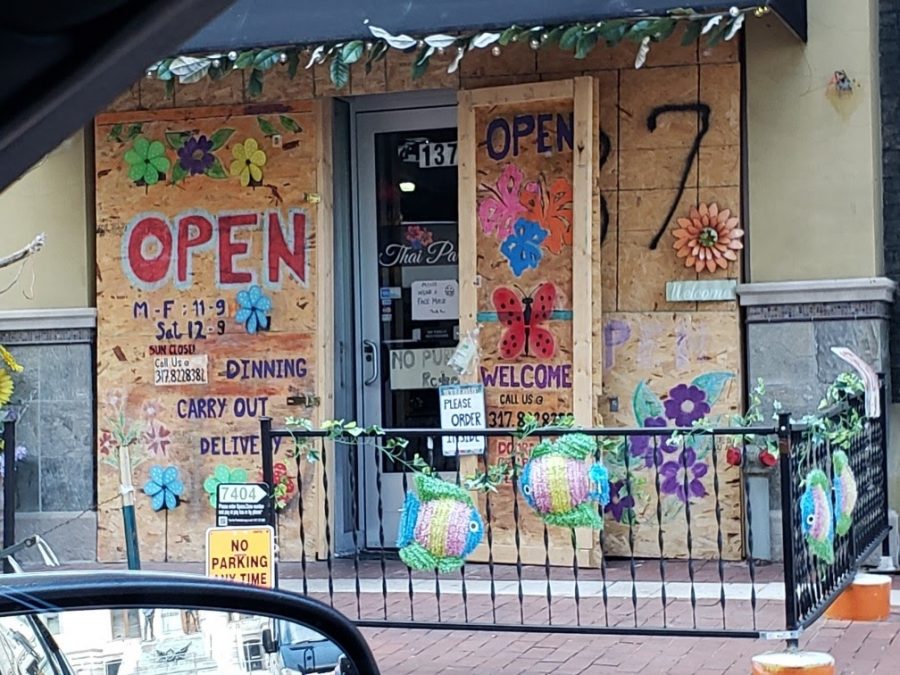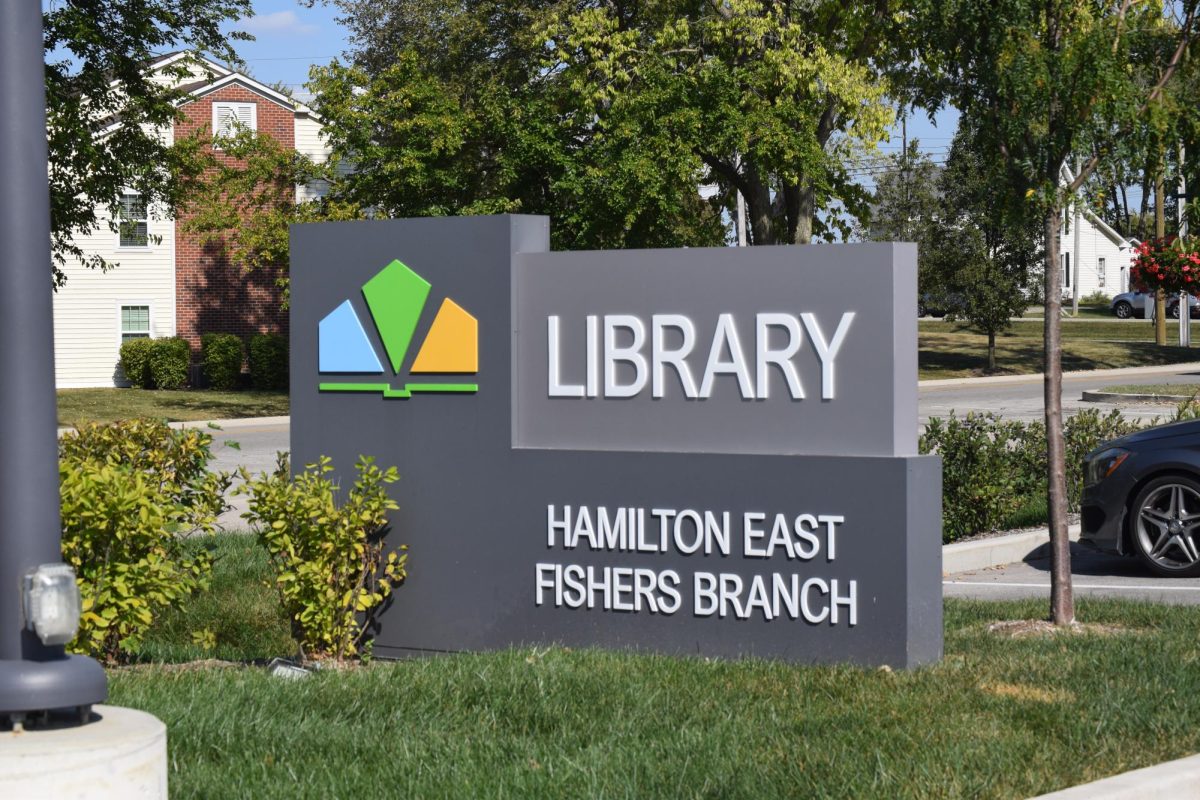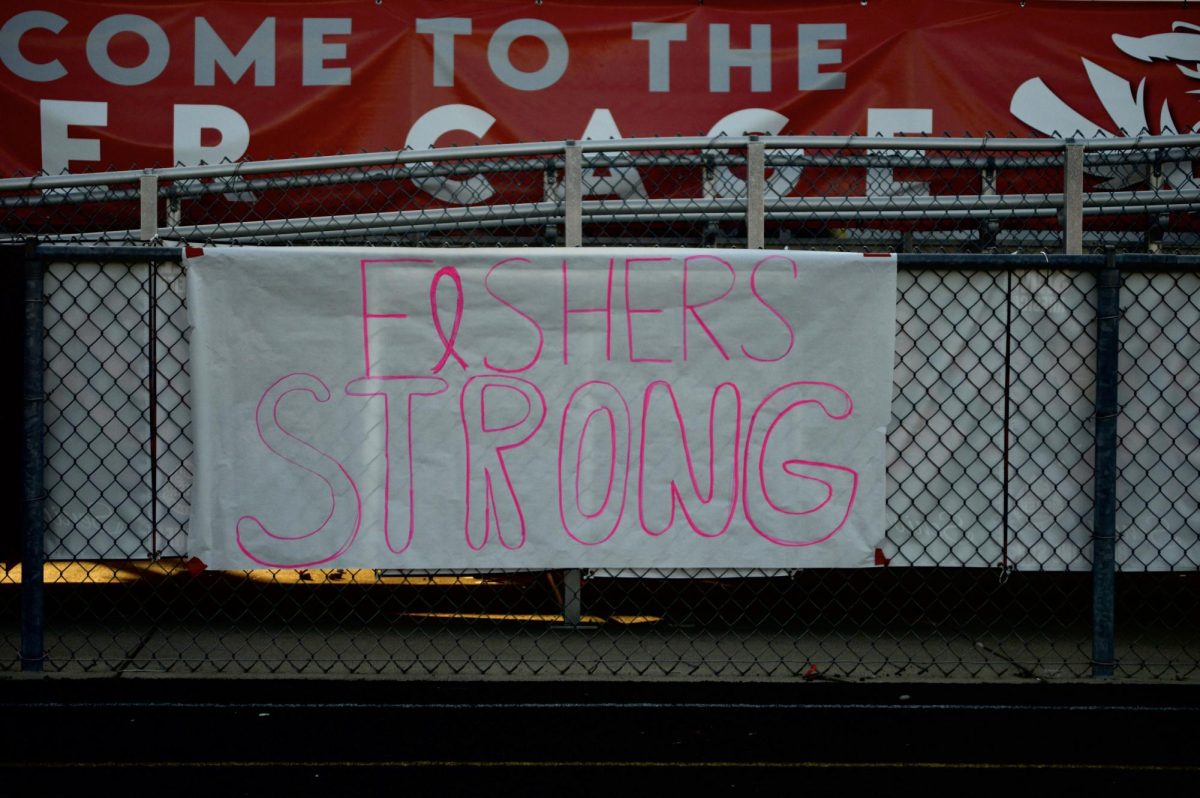Looking back on the 2020 election
Thai Place, a restaurant in downtown Indianapolis, boarded up their windows out of fear for protests after the election.
December 15, 2020
America saw the first female and Black person elected as the vice president, the oldest president-elect in history and the highest voter turnout ever during the 2020 election. According to Bloomberg, at least 161 million Americans voted in the 2020 election, a number larger than the 2016 election, which saw 139 million people vote. Not to mention, America was in the midst of a pandemic. A multitude of issues were at stake for voters, such as plans to combat the coronavirus pandemic and its effects and the direction of U.S. healthcare.
“The sides of the election you can choose from are both pretty extreme, and when you have pretty extreme things going on in our everyday life, then the people that you vote for become extremely important,” sophomore Andrew Giger said.
With the severity of this election came different group’s fears, which resulted in protests in regards to the election results. In downtown Indianapolis, businesses and offices such as Eli Lilly boarded up their windows before the election to prevent damage to their buildings. On Nov. 7, after Joe Biden’s election victory was called, a group of Trump supporters gathered outside the Indiana Statehouse as part of the “#Stopthesteal” campaign, which was said to have happened in every state, according to the IndyStar. The protesters waved flags and held signs outside of the Capitol building. No businesses or people were said to have been harmed in Indianapolis.
“The reaction that I got from a lot of people was a lot more toned down than I expected,” Giger said. “So far, nobody that I have seen or heard of has been terribly angry as I would have expected.”
The COVID-19 pandemic played a key role in this election. Although the coronavirus has negatively affected the lives of many Americans, it promoted an alternate way to vote: mail-in ballots. According to pewresearch.org, mail-in voting accounted for 46% of the ballots in the 2020 election compared to the slim majority of 54% of voters who voted in-person.
“The coronavirus had a negative effect by killing a potential 200,000 voters, but on the flip side, people used mail-in ballots a lot more,” junior Tahaa Munir said. “If we start seeing a lot more mail-in ballots legitimized, that could be a positive effect from this election.”
Since the 2020 election had the largest voter turnout in modern history, Giger argues that the coronavirus benefitted the election.
“I think the coronavirus had a positive effect on the election because we had many more people come out and vote this year, and that is something that people have been trying to do for a really long time,” Giger said. “It took the coronavirus for people to actually go out and vote.”
Another monumental moment in the 2020 election was when Kamala Harris was nominated to be the democratic party vice president, making her the first woman and Black nominee and now elect. For junior Jaden Sparks, this nomination was a symbol of how empowering the U.S. political system has become for minorities.
“This nomination showed that we are trying to add some diversity into the political sphere,” Sparks said. “I feel as if Hillary running for president back in 2016 influenced women to run for more political positions and now Kamala becoming the vice president will inspire more diversity in the upcoming elections.”
The media was very involved regarding the campaigning process and spread of election updates this year. According to statista.com, 47% of adult social media users remember seeing a political ad. As many Americans received live news updates on their social media feeds, these platforms were being utilized as political tools.
“The media played a big role in establishing all the dividing issues that people have, everything from social issues to political and economic,” Munir said. “The media ensured that people had division, which in my opinion isn’t positive.”
Sparks remembers seeing websites where people could register to vote and seeing links to a breakdown of the candidates’ stances on Instagram and Facebook.
“I thought all the information on social media was helpful as long as people knew what was true and what wasn’t,” Sparks said. “Also, the political sphere on social media encouraged people to get out and vote.”
No matter which side of the aisle, something was to be absorbed from the 2020 election.
“I think we should look more at what we have in common versus what we don’t have in common,” Munir said. “We are all Americans and all exist in our communities.”









